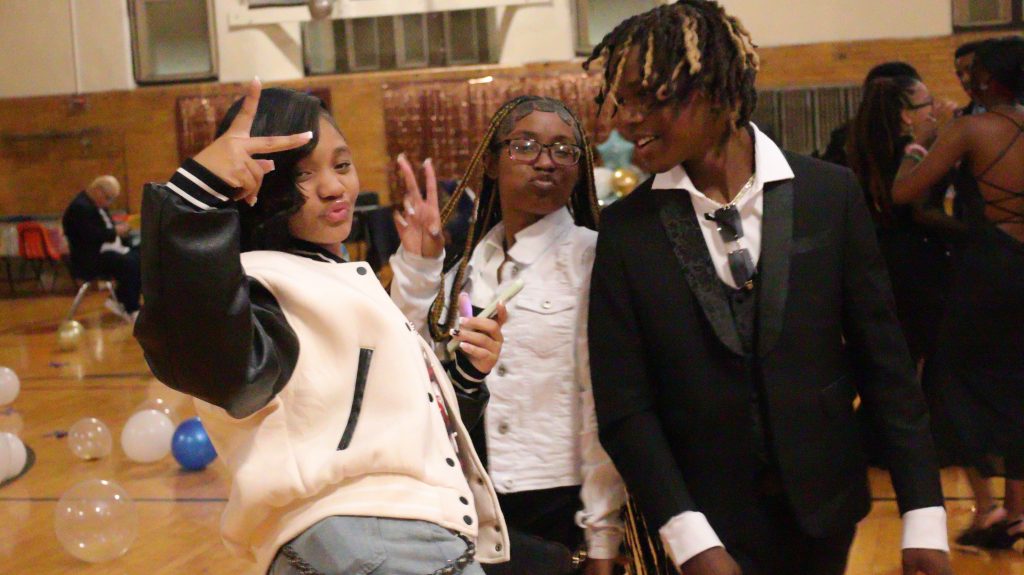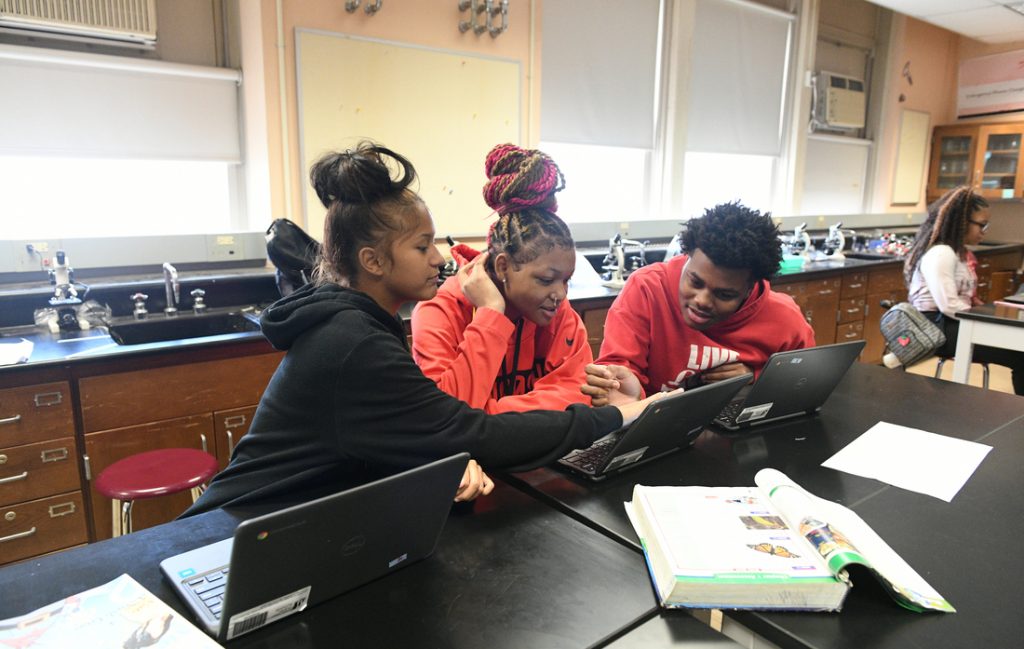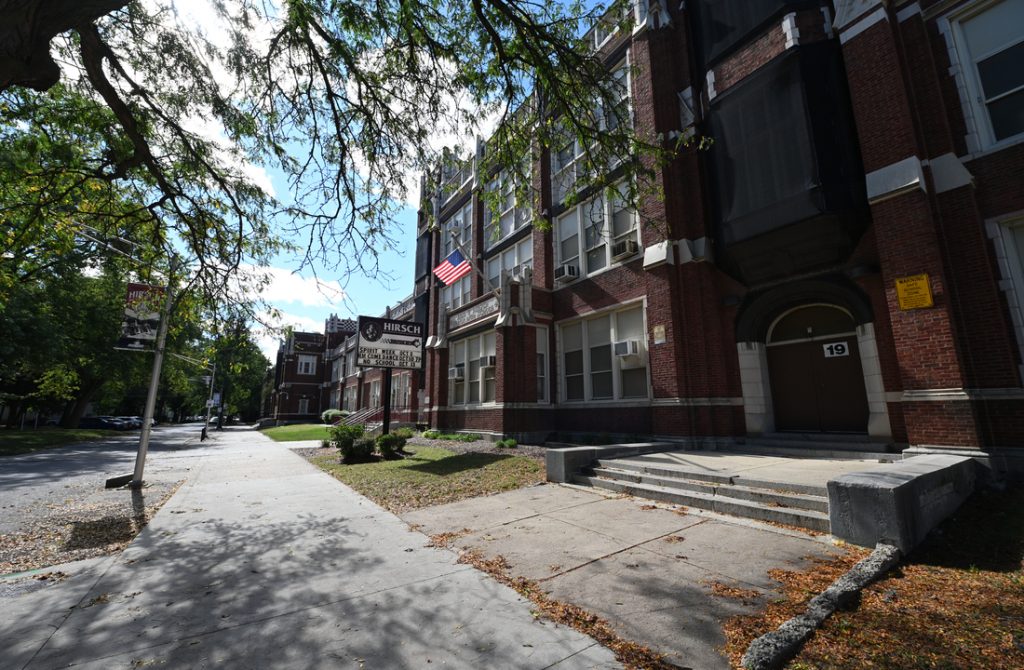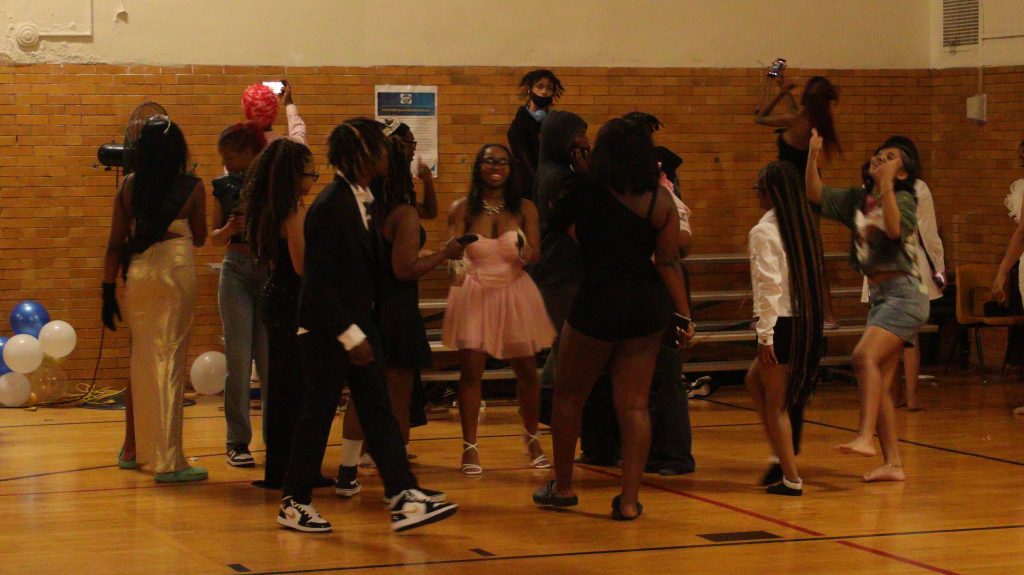Key Performance Indicators: The Duality of Success
This dashboard summarizes the core tension and emerging successes detailed in the report. Hirsch is leveraging its intimate scale to achieve remarkable successes in climate and instructional delivery, even as it battles the profound structural challenge of chronic absenteeism. Explore the tabs to drill down into the ‘how’ and ‘why’ behind these metrics.
(Oct 2025) Small scale enables the high-touch personalized model.
(Q1 2025-26) A major cultural victory; proof of R.I.S.E.U.P. effectiveness.
(Q1, D or Higher) High proficiency, reflecting instructional stability.
(YTD, Wk 11) The primary external structural barrier.
(FY25) High investment demanding quality and measurable impact.
Tangible re-engagement of the school’s historical legacy.
The Academic Story: Instructional Success Against Structural Odds
This section visualizes the key data points that illustrate the effectiveness of Hirsch’s current teaching model. The contrast between high chronic absenteeism and high pass rates confirms that instruction is robust; the core challenge lies in external barriers.
Chronic Absenteeism Rate (YTD Wk 11)
Chronic absenteeism is Hirsch’s primary structural obstacle, reflecting neighborhood trauma and mobility. The current YTD rate drives administrative focus on attendance campaigns and social supports like the Husky Helping Hand Program.
Q1 Academic Proficiency by Student Group
The specialized support model works: ELL students achieved a 96% pass rate, and SpEd students achieved 89%. This success validates the focus on high-leverage teaching strategies.
Analysis: Instructional Fidelity and Equitable Outcomes
The instructional success in Q1 is not accidental. Teachers are actively implementing collaborative strategies from the Instructional Empowerment model and Kagan trainings to boost engagement and participation in every classroom. Furthermore, outside partners like City Year** provide targeted Tier 2 and Tier 3 interventions, maximizing the impact of the personalized attention model and ensuring individual student needs are met.
“The focus on small-group instruction is critical. Our low student numbers allow us to tailor interventions (like Renaissance, Freckle, and Lexia programs) precisely to student needs, leading directly to the 94% overall mastery rate.” – Report Analysis.
The Culture Shift: Creating a Safe Haven of Belonging
Cultural metrics are key to combating absenteeism. Hirsch has intentionally transformed its climate to ensure the building is a space of security, support, and community pride, evidenced by its major non-academic successes.
A Measurable Victory: Zero Conflicts
The building recorded zero internal physical fights in Q1 2025-26. This victory stems from operationalizing the R.I.S.E.U.P. Core Values (Respect, Integrity, Self-Discipline, Excellence, Unity, Perseverance). This consistent application of restorative practices and proactive SEL lessons like Respect 101 creates a powerful safe haven where students feel secure.
Trauma-Informed Support & Wellness
The Behavioral Health Team (BHT), supported by Dean Thomas Hood, Jr., Youth Intervention Specialist Victoria Aupont, and the security team, treats behavior issues as trauma-response and skill deficits. This shift prevents punitive escalations.
- SPARCS: Psychotherapy for Adolescents Responding to Stress.
- Social Skills Groups: For targeted Tier 2 and Tier 3 interventions.
- Support Staff: Social Worker Tanisha Thomas and Psychologist Jennifer Jones anchor the holistic wellness strategy.
Reclaiming Pride and Student Joy

Figure 1. Student Pride at Homecoming: Students celebrating Homecoming Week during the 2025 Sneaker Ball, showcasing renewed school spirit and cultural pride at Hirsch Metropolitan High School. (Photo: Christopher Hood, Tru Hood Studio LLC)
Cultural events are designed to build community and pride. The success of the 2025 Homecoming Sneaker Ball—a high-energy, vibrant event—and the creative Haunted Hallway (led by the Art Dept. under Ms. Kowalczyk) prove that students are choosing to invest their own energy back into the building. This reclaiming of space and tradition is a powerful act of youth engagement, essential for fostering the “school connectedness” needed to drive up attendance.
The Human Pillars: Staff Dedication, Programs, and Legacy
Hirsch’s ultimate strength is its unwavering commitment from individuals. This section details the “anchor staff” who uphold the building and the critical support programs that directly address external student hardship.
These veteran and dedicated staff members are the institutional memory and the daily drivers of the cultural shift, operating with a fierce, personal commitment to the students.
Tiffany Gore & Vera Tomlinson
Administrative Leadership. Drive the “Change the Narrative to Shift the Culture” theme, ensuring every professional development (Instructional Empowerment, Kagan) aligns with measurable student growth (Newsletter Wk 12).
Ms. Peppers
Cafeteria Manager / Institutional Memory. A 40-plus-year pillar whose consistent presence forms a critical part of the school’s social infrastructure and sense of family.
Michelle Ingram
20-Year Veteran English Teacher. Embodies the fierce, long-term educational commitment that anchors the school against systemic odds. (Source: Capstone Interview Insight).
Thomas Hood, Jr.
Dean of Students / Climate Leader. Directly leads the shift toward the “zero conflict” environment, ensuring R.I.S.E.U.P. core values translate into daily action.
Tori Ferman & Juatonia Taylor
Post-Secondary Focus. Provide targeted counseling and guidance, evidenced by recent success in college acceptances (e.g., Makayla B. to SIU Edwardsville).
Julianna Kowalczyk
Art Teacher / Cultural Driver. Leads major cultural initiatives like the Haunted Hallway, integrating academic subjects with school pride and student engagement.

Figure 2. Personalized Learning: A Hirsch science instructor guides students through a project-based learning activity during Fall 2025, reflecting the school’s shift toward personalized academic engagement. (Photo: Christopher Hood, Tru Hood Studio LLC)
New and existing programs are designed to remove external barriers to learning and build vocational skills, addressing the holistic needs of the student body and connecting the school to external community resources.
Husky Helping Hand Program
Direct Support. Offers free laundry services and hygiene products, directly addressing economic hardship and attendance barriers.
OST (Out-of-School Time)
Includes programs like Media Your Way (music/content creation), Girl World, and Just Us to provide safe, enriching, and skill-building after-school spaces.
Culinary Arts Program Relaunch
Planned return in partnership with Sacred Ground Ministry, offering essential Career & Technical Education (CTE) pathways and vocational training.
New Life Covenant Southeast Church
A key community partner providing deep social resources, including food pantries and turkey giveaways during the Thanksgiving season (Newsletter Wk 12).
City Year Partnership
Collaborates to establish small-group instruction using educational technology (Renaissance, Freckle, Lexia) for Tier 2 and Tier 3 academic pull-out support.
Greater Grand Crossing Park District
Secured a 5-week fitness collaboration, actively promoting staff wellness and reinforcing the school’s relationship with neighborhood hubs.
 The Echoes of Grandeur and the Catalyst of Decline
The Echoes of Grandeur and the Catalyst of Decline

